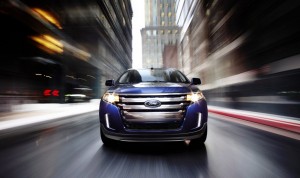
Ford is betting heavily on turbos -- which are at the heart of the maker's popular EcoBoost technology.
Once largely reserved for high-performance sports cars and specialty vehicles, turbocharging is becoming an increasingly common solution used on a variety of mainstream products – and should see an 80% global increase in usage over the next five years, according to a new forecast by one of the leading turbo suppliers.
By 2017, turbos will be used on an 36 million new passenger vehicles annually, forecasts Honeywell Transportation Systems. That would represent about 40% of the projected automotive market. Last year, turbos were used on just 20 million vehicles – about 25% of global automotive volume.
“Turbocharged engines are expected to continue to grow globally because they meet the needs of consumers in a wide range of vehicle segments and geographic markets,” said Honeywell Transportation Systems Vice President of Marketing and Product Management Peter Hill.
“Turbochargers offer a combination of fuel-savings and performance at an affordable price compared to other technologies, making them an attractive option on subcompact cars, full-size luxury sedans, pick-up trucks and everything in between,” he added.
Turbochargers have already shown a significant growth in Europe where they have helped transform the traditionally slow and undesirable diesel into one of the market’s most popular powertrain options – representing nearly 50% of total Continental sales.
And with European Union rules calling for a 30% reduction in CO2 emissions from 2011 to 2020, Honeywell forecasts still more growth in turbo sales within the EU.
But demand has been growing in the U.S., as well. Ford, for example, is betting heavily on its turbocharged EcoBoost system which will soon be offered on about 80% of the maker’s model lines. An EcoBoost V-6 is already one of the most popular choices for buyers of Ford’s big F-Series pickup – breaking the traditional taboo against small engines in full-size trucks.
Honeywell believes turbos will gain even more traction as manufacturers struggle to meet upcoming U.S. fuel economy mandates, especially the 54.5 mpg Corporate Average Fuel Economy standard set for 2025.
But demand is also growing in emerging markets, such as India and China, where government regulators are pressing the industry to reduce dependence upon foreign oil supplies.
The Honeywell study, released for the 2012 Paris Motor Show, predicts that,
- In the U.S., turbocharger sales will nearly triple over the next five years to more than 4 million in 2017, compared to 1.3 million in 2011. Turbos are projected to be on about one-quarter of all new U.S. vehicles in 2017,
- The number of turbocharged engines in India is expected to more than triple from about 900,000 to more than 3 million by 2017;
- China is projected to go from 2.1 million turbos in 2011 to 6.7 million new turbochargers in 2017 or about 25% market penetration;
- In Europe, turbochargers are expected to grow from 12.9 million, or 67 percent of the new automobiles, in 2011 to 17.4 million, or more than 85 percent of new vehicles, in 2017.
Honeywell’s optimism is reflected by various automotive forecasts. General Motors expects to use the technology on 7% of its vehicles this year – already a big jump from just a few years ago. And by 2013, that will jump to 10%, noted Rick Balsley, head of the maker’s turbocharging program.
